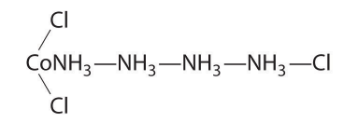Coordination compounds
A coordination complex or metal complex consists of a central atom or ion, which is usually metallic and is called the coordination centre, and a surrounding array of bound molecules or ions, that are in turn known as ligands or complexing agents.
Coordination refers to the "coordinate covalent bonds" (dipolar bonds) between the ligands and the central atom. Originally, a complex implied a reversible association ofmolecules, atoms, or ions through such weak chemical bonds. As applied to coordination chemistry, this meaning has evolved. Some metal complexes are formed virtually irreversibly and many are bound together by bonds that are quite strong.

Examples
Most metal complexes orcompounds except for alloys. Specific examples includehemoglobin and Ru3(CO)12
Properties of Coordination Compounds
The coordination compounds formed by the transition elements are coloured due to the presence of unpaired electrons that absorb light in their electronic transitions.
When the coordination centre is a metal, the corresponding coordination complexes have a magnetic nature due to the presence of unpaired electrons.
The coordination compounds exhibit a variety of chemical reactivity and can be a part of inner-sphere electron transfer reactions as well as outer-sphere electron transfers.
Complex compounds with certain ligands have the ability to aid in the transformation of molecules in a catalytic/stoichiometric manner.
